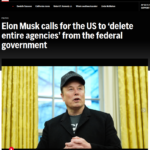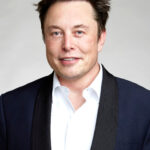Today, Honda launched a new project – the Honda Smart Home – that’s a glimpse into the future of buildings and transportation. And, it’s a future that isn’t terribly far away because most of the project uses off-the-shelf equipment. The idea is to look beyond zero emission vehicles to a complete zero emissions lifestyle. To design buildings so they naturally are more efficient and hugely reduce the environmental impact of both operating the building and the occupants transportation needs. This is “zero net energy” for not just the house, but the family car.
The implementation is a house in Davis, CA, that’s part laboratory, and part living space for a UC Davis staffer. It’s capable of producing more power from its rooftop than is required to run the building, AND to power the Honda Fit EV that comes with the house.
The design uses a laundry list of building efficiency technology, along with a Honda-designed Home Energy Management System (HEMS) to operate the system for optimum efficiency. Most of the technologies are off-the-shelf and can be installed by anyone today. The HEMS system developed by Honda brings a lot of value to the system.
That this system produces more power than required for both house and car does, I think, demonstrate a flaw in Honda’s overall plans for vehicle electrification. The company seems more intent on pursuing fuel cell cars, rather than plug-in electric ones. I don’t want to get into nagging Honda over their distribution plans for the Honda Fit EV or Accord PHEV. Instead, let’s focus on this: A fuel cell vehicle wouldn’t give you the flexibility to easily capture electricity and use it to charge an electric car. As we’ll see in a minute, they’re even using direct DC charging with the car to avoid DC-AC-DC conversion losses.
Yes, you could put a system in the house to electrolyze water to get hydrogen and then compress it on-site to refuel a fuel cell car. Doing so requires a whole lot of energy to electrolyze and compress hydrogen as well as the significantly large equipment to do the process. Local energy storage and DC charging is easily accomplished, and just involves shuttling electricity back and forth.
Photovoltaics: a 9.5 kilowatt solar array – this is larger than required, but will allow the research team to add additional features over time.
Direct DC-DC vehicle charging system so the Honda Fit EV will charge using DC power direct from the house or solar panels. This avoids DC-AC-DC conversion losses.
A home-sized grid energy storage system containing 10 kilowatt-hours of electrical storage. This can be used to charge the car, to balance energy interaction between the house, solar panels and electrical grid, and more. The HEMS system will automatically perform a number of smart grid functions like demand response.
An HVAC system and heat pump that integrates geothermal heating/cooling.
“Pozzolan Infused and Post-Tensioned Concrete” — This is a somewhat different sort of concrete that is more energy efficient to make. Honda worked with a local building contractor, and now that contractor is empowered legally to make other buildings using this technique.
An advanced LED lighting system that not only saves gobs of electricity, but can smartly tune the color temperature of the lighting to match time of day. The purpose is to encourage proper circadian rhythms for better health, and to preserve night vision at night-time.
Uses a “passive design” house to optimize passive solar energy inputs, as well as incorporate excellent insulation. It seems the design doesn’t meet the full Passiv House criteria, but it’s in the same ballpark. The idea is to decrease energy consumption needs at the outset.
The landscaping is a Xeriscape design. It means the house is surrounded by rocks rather than grass, and therefore the landscaping doesn’t require watering. I’d rather they use permaculture principles in the landscaping to capture water, and have plants.
The entirety of the concept is pretty impressive. It is different from other zero emissions demonstration/research houses by trying to account for transportation energy requirements in the zero footprint goal.
Here we see the Fit EV in the garage, connected to the charging system, and the HEMS system to the right. The box labeled “HEMSx” is the management system, while the box with the black door next to it is the grid energy storage unit.
The charging cord is where the DC power cord comes. Honda’s press release doesn’t say what DC charging system is being used – however, on querying a Honda representative I learned it’s a CHAdeMO cord. The Japanese Honda Fit EV includes CHAdeMO support – so why don’t they include that in the American version??
Anyway – the HEMS operates in a number of interesting modes, a lot of which involve smart grid interactions. Honda is partnering with PG&E to develop smart grid support including demand response (cutting off power demand when requested) and grid stabilization.
The grid energy storage unit is key in this, because the house will have its own ability to exchange electricity to/from the electrical grid when needed. For example the house can draw energy from the grid when its the greenest – by consulting the CALISO website. Or by monitoring the voltage of the neighborhood electric grid, the house can determine whether to supply electricity to the grid (to shore up the voltage) or not.
The HEMS unit takes care of managing the flow of energy between the house, the electrical grid, and the Honda Fit EV.
LED lights are way cool – much better than CFL’s, and I’m saying that as someone who’s used CFL’s since 1990. Some of the CFL’s let you computer control the color temperature. That may seem like a so-what feature until you ponder the health effects of color temperature on the circadian rhythms in the body, and especially melatonin production. There’s a whole lot of healthy-living stuff in our future that can come from color tunable LED’s.
This is a part of the system which I just don’t grok. I want green stuff growing around the house, and I want to garden. These rocks get in the way of doing so. It’s possible, with permaculture techniques, to have a landscape full of greenery that doesn’t require irrigation.
Given that this house is in Davis – I suggest to Honda that they visit the Village Homes neighborhood and take a tour. It’s an amazing amazing amazing place. The place was designed with techniques similar to permaculture and it’s like living in a botanical garden. Village Homes is also in Davis, so it’s the same microclimate as the Honda home.
They’ve designed an iPad app to go with the house. Obviously it’s gathering some data and showing it to the occupant.
During the press webinar, they said the house is wired up with over 200 sensors, and that Honda is working with researchers at UC Davis and PG&E.
The researchers are looking to capture lots of data about building behavior etc, to help guide future developments.
The project website – http://www.hondasmarthome.com/![]() – is going to house the data, as well as information about the technologies used in the house. One goal is for others to be able to replicate what the researchers are doing.
– is going to house the data, as well as information about the technologies used in the house. One goal is for others to be able to replicate what the researchers are doing.
Another goal is that Honda see’s an opportunity to get into the business of home energy management technology.
- Highway design could decrease death and injury risk, if “we” chose smarter designs - March 28, 2015
- GM really did trademark “range anxiety”, only later to abandon that mark - March 25, 2015
- US Government releases new regulations on hydraulic fracturing, that some call “toothless” - March 20, 2015
- Tesla Motors magic pill to solve range anxiety doesn’t quite instill range confidence - March 19, 2015
- Update on Galena IL oil train – 21 cars involved, which were the supposedly safer CP1232 design - March 7, 2015
- Another oil bomb train – why are they shipping crude oil by train? – Symptoms of fossil fuel addiction - March 6, 2015
- Chevron relinquishes fracking in Romania, as part of broader pull-out from Eastern European fracking operations - February 22, 2015
- Answer anti- electric car articles with truth and pride – truth outshines all distortions - February 19, 2015
- Apple taking big risk on developing a car? Please, Apple, don’t go there! - February 16, 2015
- Toyota, Nissan, Honda working on Japanese fuel cell infrastructure for Japanese government - February 12, 2015



















